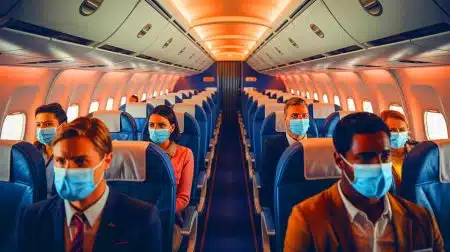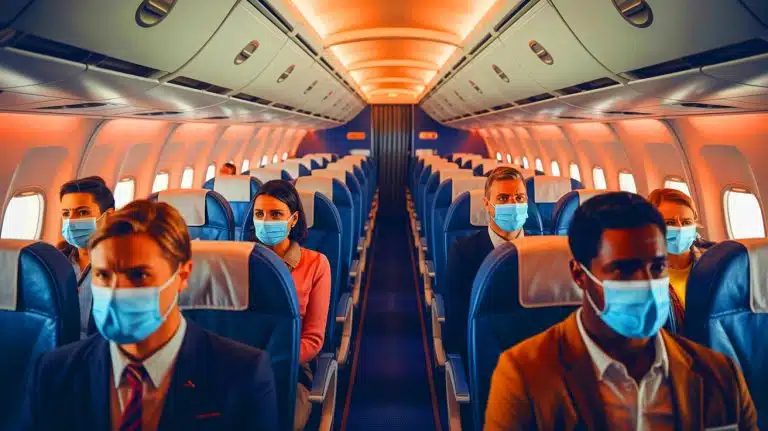| IN A NUTSHELL |
|
Air travel is a marvel of modern engineering, connecting people across continents in mere hours. However, a less-discussed phenomenon is raising eyebrows in the aviation industry: toxic fumes leaking into aircraft cabins. These incidents, though not widely known, pose significant health risks to both crew members and passengers. As reports of contaminated air in flight increase, questions about passenger safety and industry accountability come to the fore. This article delves into the underlying causes of these leaks, the health implications for those affected, and the industry’s response to growing concerns.
The Source of Toxic Fumes
Since the early 2010s, thousands of incidents involving toxic fumes on commercial flights have been reported worldwide. These fumes often result from a compromised air supply system. In most commercial aircraft, excluding the Boeing 787, air intended for cabin pressurization and climate control is drawn from the engines. This air is compressed and heated before entering the cabin. However, over time, seals designed to prevent oil and hydraulic fluid leaks can degrade, allowing hazardous vapors to seep into the cabin.
This contamination process poses serious risks. Crew members, including flight attendants and pilots, are particularly susceptible to exposure, frequently reporting symptoms such as headaches, heart palpitations, and breathing difficulties. In severe cases, neurological and cardiac issues akin to concussions have been observed. Passengers, too, have reported similar symptoms, raising alarms about the broader implications of these fumes for public health.
Documented Health Impacts
Several alarming cases have highlighted the severe health impacts of toxic fume exposure. A comprehensive investigation by The Wall Street Journal revealed instances of permanent health damage among airline crew members. In 2018, Florence Chesson, a JetBlue flight attendant, developed lasting brain and nerve injuries after a flight with a noticeable "dirty socks" odor. Similarly, pilot Andrew Myers collapsed in the cockpit, later diagnosed with irreversible neurological damage. Former pilot turned researcher Susan Michaelis dedicated her later years to raising awareness about the issue before succumbing to cancer, which doctors linked to repeated fume exposures.
The frequency of reported incidents has surged in recent years, with figures rising from approximately ten incidents per million flights in 2014 to over 100 in 2024. Aircraft such as the Airbus A320, particularly the newer neo model, are frequently implicated. These cases underscore the urgent need for industry-wide solutions to mitigate the risks associated with contaminated cabin air.
Industry's Tepid Response
Despite the mounting evidence, the aviation industry has been slow to implement substantial changes. Major manufacturers like Airbus and Boeing, along with airlines, acknowledge the presence of unpleasant odors but often downplay them as mere "temporary inconveniences." In some instances, maintenance protocols have been relaxed to prevent grounding aircraft, even when problems have been identified.
The Federal Aviation Administration (FAA) in the United States and the European Union Aviation Safety Agency (EASA) describe these occurrences as "rare." However, internal studies contradict this assurance, revealing the presence of toxic substances such as formaldehyde, organophosphates, and neurotoxic solvents in cabin air. Efforts by the U.S. Congress to mandate air quality sensors or specific filters have repeatedly stalled, although a new legislative proposal aims to phase out the current air supply system within seven years. Meanwhile, Airbus is exploring solutions to reduce leaks by relocating air intakes, but only in new aircraft models starting in 2026.
Data on Incident Frequency
| Year | Incidents per Million Flights |
|---|---|
| 2014 | 10 |
| 2024 | 100 |
Looking Forward
The issue of toxic fumes in aircraft cabins is a critical public health concern that requires urgent attention. While the aviation industry has made some strides toward addressing this problem, the pace of change remains slow, and the proposed solutions are limited in scope. The health and safety of passengers and crew should be a top priority, and comprehensive measures are needed to ensure the air they breathe is free from harmful contaminants.
As we continue to explore the intricacies of air travel safety, the question remains: how can industry stakeholders and regulators collaborate effectively to safeguard the health of everyone on board? The answer to this question will shape the future of air travel and the well-being of millions of travelers worldwide.
Did you like it? 4.5/5 (26)








Is this article for real? Sounds like a horror movie plot! 😱
Wow, I had no idea this was happening! 😲 Thanks for shedding light on this important issue.
Is there any way to know if a plane we’re flying on has had these issues before?
Thank you for shedding light on this critical issue. We deserve to know the risks.